History
The first recorded bridge over the Golden Horn in Istanbul was built during the reign of Justinian the Great in the 6th century, close to the area near the Theodosian Land Walls at the western end of the city.
In 1453, during the Fall of Constantinople, the Turks assembled a mobile bridge by placing their ships side by side across the water, so that their troops could move from one side of the Golden Horn to the other.
In the years 1502–1503 there were plans to construct the first bridge at the current location. Sultan Bayezid II solicited a design and Leonardo da Vinci, utilizing three well-known geometrical principles, the pressed-bow, parabolic curve and keystone arch, created an unprecedented single span 240 m long and 24 m wide bridge for the Golden Horn, which would have become the longest bridge in the world of that time if it had been constructed. However, the ambitious design was not approved by the Sultan.
A smaller scale version of Leonardo da Vinci’s Golden Horn Bridge was brought to life in 2001 near Oslo, Norway by the contemporary artist Vebjørn Sand, the first civil engineering project based on a Leonardo da Vinci sketch to be constructed. The Leonardo Bridge Project hopes to build the design as a practical footbridge around the world, including the Golden Horn in Istanbul, using local materials and collaborating with local artisans as a global public art project. The Wall Street Journal referred to the Project as a “…logo for the nations.
Another Italian artist, Michelangelo was also invited to design a bridge for Istanbul. Michelangelo rejected the proposal, and the idea of building a bridge across the Golden Horn was shelved until the 19th century.
In the early 19th century Mahmud II (1808–1839) had a bridge built a bit further up the waterway, between Azapkapı and Unkapanı. This bridge, known as the Hayratiye (Benefaction in English), was opened on September 3, 1836. The project was carried out by Deputy Lord High Admiral Fevzi Ahmet Paşa using the workers and facilities of the naval arsenal. According to the History of Lutfi, this bridge was built on linked pontoons and was around 500 to 540 m long.
The first Galata Bridge at the mouth of the waterway was constructed in 1845 by Valide Sultan, the mother of Sultan Abdülmecid (1839–1861) and used for 18 years. It was known as the Cisr-i Cedid or New Bridge to distinguish it from the earlier bridge further up the Golden Horn, which became known as the Cisr-i Atik or Old Bridge.
On the Karaköy side of the bridge, there was an inscription as a couplet by poet İbrahim Şinasi saying that the New Bridge was built by Sultan Abdülmecid I. First to pass over the bridge was Sultan Abdülmecid, and the first to pass below it was the French captain Magnan in his ship the Cygne.
The second bridge
This bridge was replaced by a second wooden bridge in 1863, built by Ethem Pertev Paşa on the orders of Sultan Abdülaziz (1861–1876) during the infrastructure improvement works prior to the visit of Napoleon III to Istanbul.
The third bridge
In 1870 a contract was signed with a French company, Forges et Chantiers de la Mediteranée for construction of a third bridge, but the outbreak of war between France and Germany delayed the project, which was given instead to a British firm G. Wells in 1872. This bridge, completed in 1875, was 480 m long and 14 m wide and rested on 24 pontoons. It was built at a cost of 105,000 gold liras. This was used until 1912, when it was pulled upstream to replace the now genuinely old Cisr-i Atik Bridge.
The fourth bridge
The fourth Galata Bridge was built in 1912 by the German firm Hüttenwerk Oberhausen AG for 350,000 gold liras. This floating bridge was 466 m long and 25 m wide. It is the bridge, still familiar to many people today, that was badly damaged in a fire in 1992 and towed up the Golden Horn to make way for the modern bridge now in use.
The fifth (current) bridge
The fifth Galata bridge was built by the Turkish construction company STFA just a few meters away from the previous bridge, between Karaköy and Eminönü, and completed in December 1994. It was designed and supervised by GAMB (Göncer Ayalp Engineering Company). It is a bascule bridge, which is 490 m long with a main span of 80 m. The deck of the bridge is 42 m wide and has three vehicular lanes and one walkway in each direction. It has also recently had tram tracks re-added to it, allowing the Istanbul Tram to run from Zeytinburnu in the suburbs near Atatürk International Airport to Kabataş, a few blocks before Dolmabahçe Palace. This bridge along with Trowse Bridge in Norwich, Erasmus Bridge in Rotterdam, a number of bridges in Saint Petersburg in Russia, a number of railway bridges in the United States may be the only movable bridges in the world that also carry electrified rail tracks.
The rest of the bridge including the market area in the first floor opened to common use in 2003.
Culture
The Galata Bridge was a symbolic link between the traditional city of Istanbul proper, site of the imperial palace and principal religious and secular institutions of the empire, and the districts of Galata, Beyoğlu, Şişli and Harbiye where a large proportion of the inhabitants were non-Muslims and where foreign merchants and diplomats lived and worked. In this respect the bridge bonded these two distinctive cultures. As Peyami Safa wrote in his novel, Fatih-Harbiye, a person who went from Fatih to Harbiye via the bridge set foot in a different civilization and different culture. Apart from its place in fiction, the romantic appearance of the Galata Bridge made it the subject of many paintings and engravings.
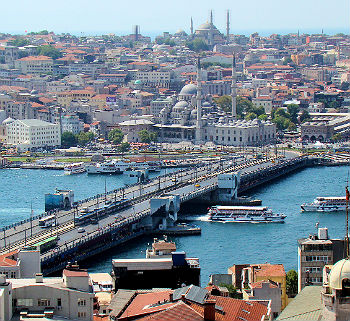
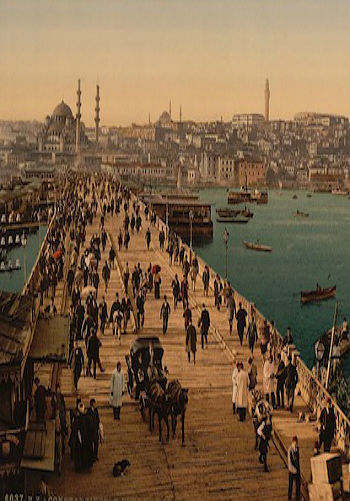
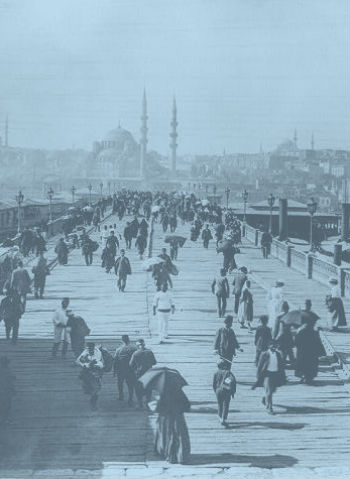
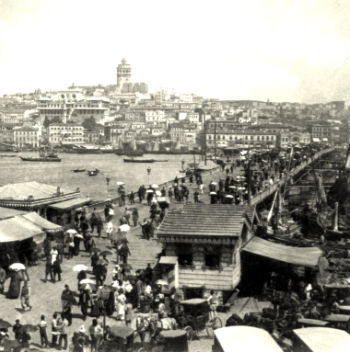
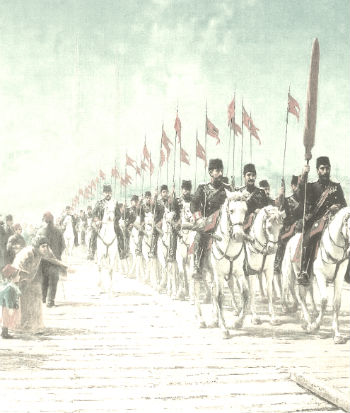
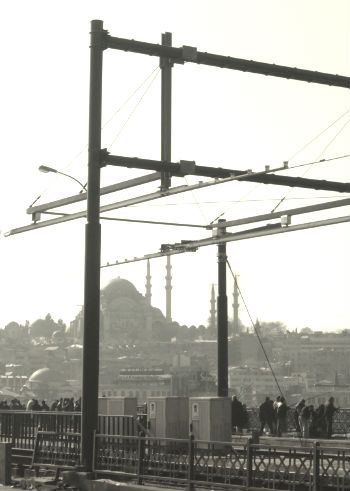
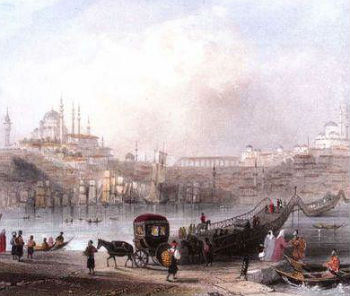


The bridge has nice views, many people fishing on the bridge, with many seafood restaurants underneath (you will be constantly harassed by waiters standing outside each restaurant, but I guess it is like that everywhere in Istanbul anyway).
But try the grilled fish sandwiches (balik ekmek) for TL 5 from the little boats (yes, they grill the fishes in the boats ).
Great seafood options underneath the Galata Bridge. Enjoyed some nice views of the city and the busy waterways. Talking to the fishermen up on the bridge was interesting as well.
After seeing a number of 5 star ratings on TA and getting a recommendation from our tour guide as a great place to go for fresh seafood, we decided to walk to Galata Bridge from our hotel. As stated in other reviews, the bridge certainly has an authentic feel, right down to seeing the fishing lines overhead while eating dinner….
Panoramic views of Golden Horn and Bosphorous. Street sellers and fishermen on the bridge and restaurants and bars underneath. Famous for kopru alti or 'under the bridge' fish sandwiches.
The Galata Bridge was busy with fishermen and roadside merchants, and there were many seafood restaurants underneath. We didn't try any of the restaurants, just took a stroll across. There wasn't anything really special about our walk.
You will enjoy an excellent view and the locals that go to fish from the bridge. Buy a Banana while you cross and head to the Egyptian market for lunch on a typical cafe.
Took a leisurely stroll on the bridge on a sunny morning. The bridge is bustling with fishermen. Nice view of the water with many boats and ferry. The Spice Market is across the street. There are vendors around selling food and tours. Did not enjoy the fishy smell. Saw many restaurants on the lower deck.
We went there during Eid time in Istanbul, the bridge is very very old. Old here does not mean authentic or beautiful. Its a blue painted bad bridge with people fishing everywhere. Crowd was terrible, wherever you look people will be sending some strange signals. I felt very insecure for the only time of my entire stay in Turkey.
I wasn't as excited about taking a night cruise on the Golden Horn as much as I would be sailing under the Galata Bridge!
The waters and surroundings take on a totally different look at night, specially when you are on the upper deck of a river boat.
Monuments and buildings beautifully lit up are very dramatic.
The Galata Bridge is probably one of the only few bridges I would classify as a tourist attraction by itself. With the myriad fishermen fishing off the sides, the view of the New Mosque on one end and the Bosphorus Bridge in the distance, the ferries passing underneath and the many restaurants located on the undersides of the bridge.